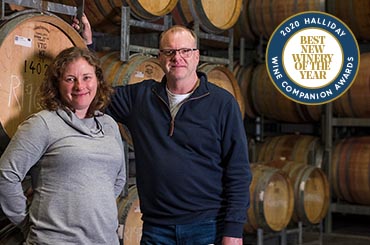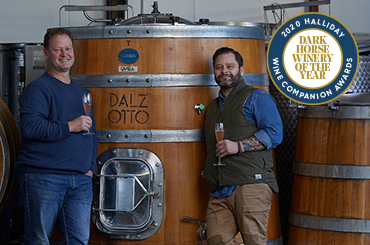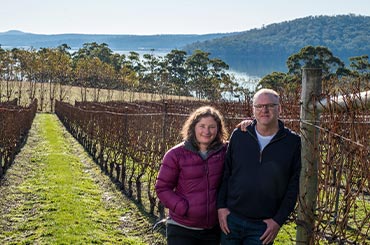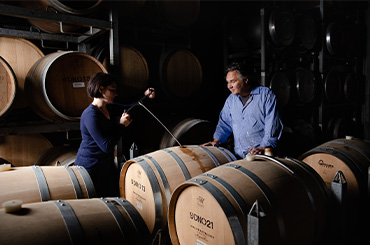Grenache has been a part of the Australian wine landscape since its beginning, but only now has it taken centre stage, with both critics and consumers singing its praises. In recent years, the coveted Jimmy Watson trophy went to grenache, and we saw the launch of the inaugural James Halliday Grenache Challenge. It was only a matter of time, as there’s so much to love about well-made examples of this perfumed, spicy, red-fruited variety – as seen with this year’s top wine. Read on to hear what James Halliday has to say about his Wine of the Year.
James Halliday on his Wine of the Year
It’s hard to separate the impact of the place, the soil, the vines, the vintage, the viticulturist, the winemaker, the vinification and the certified biodynamic management of the 69-year-old dry-grown bush vines. All have contributed to the 260 dozen bottles of this magnificent wine.
The maker is Peter Fraser (Wine Companion 2016 Winemaker of the Year), the viticulturist Michael Lane. They have jointly guided the vineyard to its biodynamic status, and Peter’s approach in the winery is a corollary to that in the vineyard. The bridge between the two is hand-picking, with the berries mechanically sorted (far superior to hand-sorting at this level): 50% crushed, 50% whole berry (no whole-bunch inclusion).
The yield varies between 15 and 16t/ha: 1–1.2t/acre. There are no herbicides or fungicides, and tractors are used minimally to reduce soil compaction or degradation. Biodynamic compost and bio preparations help to maintain a living and self-sustaining soil.

It’s hard to separate the impact of the place, the soil, the vines, the vintage, the viticulturist, the winemaker, the vinification and the certified biodynamic management of the 69-year-old dry-grown bush vines. All have contributed to the 260 dozen bottles of this magnificent wine.
The wine comes from Block 31 of the vineyard, at once the highest in terms of
elevation, the lowest in terms of yield, and the deepest in terms of sand. It seems
counterintuitive, but this is wine: quality is its raison d’être. The soil’s free-draining
capacity is friend and foe. Vines of all shapes and sizes don’t like waterlogged soils, and
the sands mean that problem is avoided. Like Hunter Valley semillon, the old vines
develop a root system that penetrates deep and can find reserves of water. Benevolent
neglect? Well, there’s more of it in the winery. The grapes endured a five-day cold
soak at 10°C in open fermenters, SO2 the only protection. They were plunged during
fermentation, but not otherwise, and the pressings were not returned to the wine.
Ceramic eggs were not used; the wine was matured on its yeast lees for 11 months
in used French oak.
Wines from each barrel were tasted before bottling, and only those that best portrayed the pedigree of this tiny but utterly exceptional place were bottled.
Previous ‘Wine of the Year’ recipients were Bass Phillip Reserve Pinot Noir 2010 (2014), Xanadu Stevens Road Cabernet Sauvignon 2011 (2015), Serrat Shiraz Viognier 2014 (2016), Best’s Thomson Family Shiraz 2014 (2017), Henschke Hill of Grace 2012 (2018) and Duke’s Vineyard Magpie Hill Reserve Riesling 2017 (2019).
This extract is from the 2020 Halliday Wine Companion guide, published by Hardie Grant and available at all good bookstores.
Wines from each barrel were tasted before bottling, and only those that best portrayed the pedigree of this tiny but utterly exceptional place were bottled.
Previous ‘Wine of the Year’ recipients were Bass Phillip Reserve Pinot Noir 2010 (2014), Xanadu Stevens Road Cabernet Sauvignon 2011 (2015), Serrat Shiraz Viognier 2014 (2016), Best’s Thomson Family Shiraz 2014 (2017), Henschke Hill of Grace 2012 (2018) and Duke’s Vineyard Magpie Hill Reserve Riesling 2017 (2019).
This extract is from the 2020 Halliday Wine Companion guide, published by Hardie Grant and available at all good bookstores.
Wine List Locked
Subsribe to Halliday's weekly newsletter to unlock this wine list











